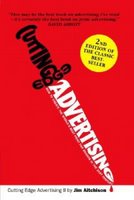 How to Get Ideas
How to Get IdeasJack Foster and Larry Corby
Berrett-Koehler Publishers, 1996
There is never been a time in all history, when ideas were so needed or so valuable. That’s because of several significant reasons. First, idea is the wheel of progress. Without them, stagnation reigns. Secondly, our computerized world are doing so much of the mundane work that we used to do, thereby, freeing us up and requiring us to do creative work which those systems cannot do. Third, in this information era, we can easily have the tools to get many things better. It comes only we combine the information to form new things, that we called idea.
This book is written by Jack Foster, a man who has been working as an advertiser for 40 years. He also has won dozens of advertising awards, including being named as Creative Person of The Year and a very respectable lecturer on advertising in The University of Southern California. So, when it comes to bring a discourse about ideas, he’s simply the most reliable source.
Foster starts it with a really simple question. When an editor writes on 20 different subjects or an advertiser write 20 different commercials, how do they get the ideas. Many experts on communications, even philosophers through the centuries have described several methods to generating ideas. They are pretty much similar with one another. Foster summarizes it in five steps; define the problem, gathered the information, search for the idea, forget about it (or in other ways waiting for an inspiration) and put the idea into action.
But, even though, they all generally agree on the steps that we must take to get an idea, none of them actually talks much about the condition we must be in to climb those steps. And if we are not in condition, it doesn’t make any difference if you know the steps, you will never get the ideas that you are capable of getting. So, what condition that we need to produce a new idea?
Foster emphasizes his book on this subject. Aside of defining what is idea and the steps to produce ideas, he also describes how we create such a situation that can help us generating ideas. He tells us how to condition our minds, so we are become ready to generate ideas. There are 8 ways; have fun, become idea prone, set our minds on goals, be more like a child, screw up our courage, rethink our thinking, and learn how to combine. And if we are pretty much in these situations, we only need to take the steps.
In the last part, Foster reminds us of one last small thing that we shouldn’t forget. It may not seem part of the process of getting an idea. But it truly is. An idea is never an idea until something happens with it. When we have done this small thing, we can look back an amazing how something new has been created.
